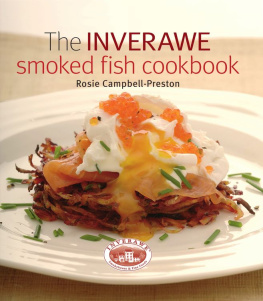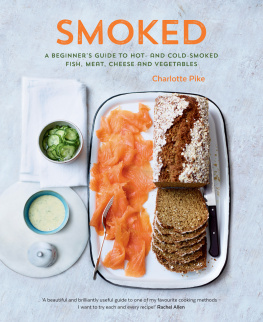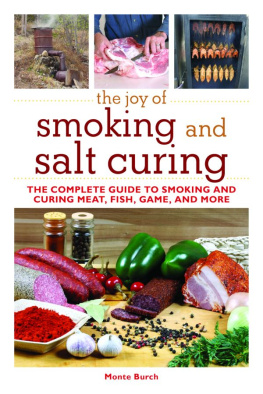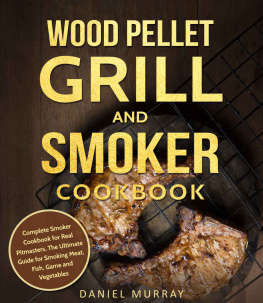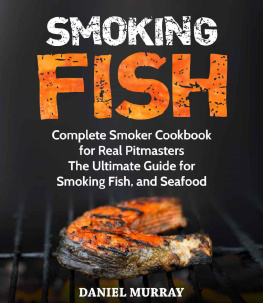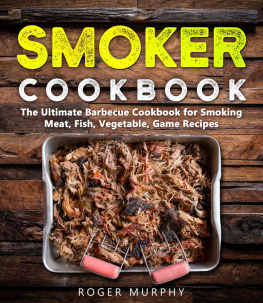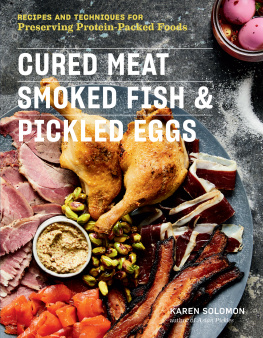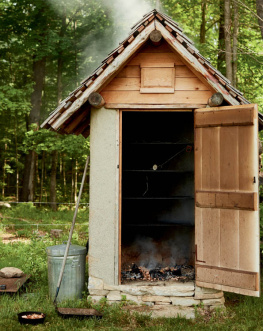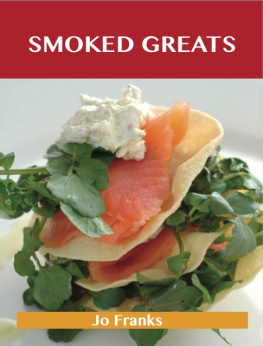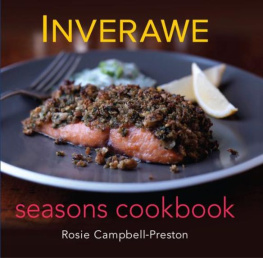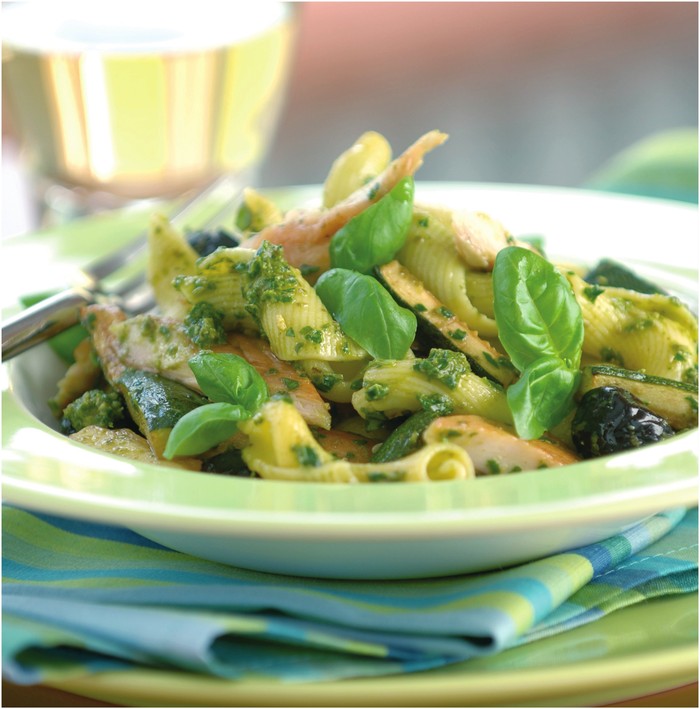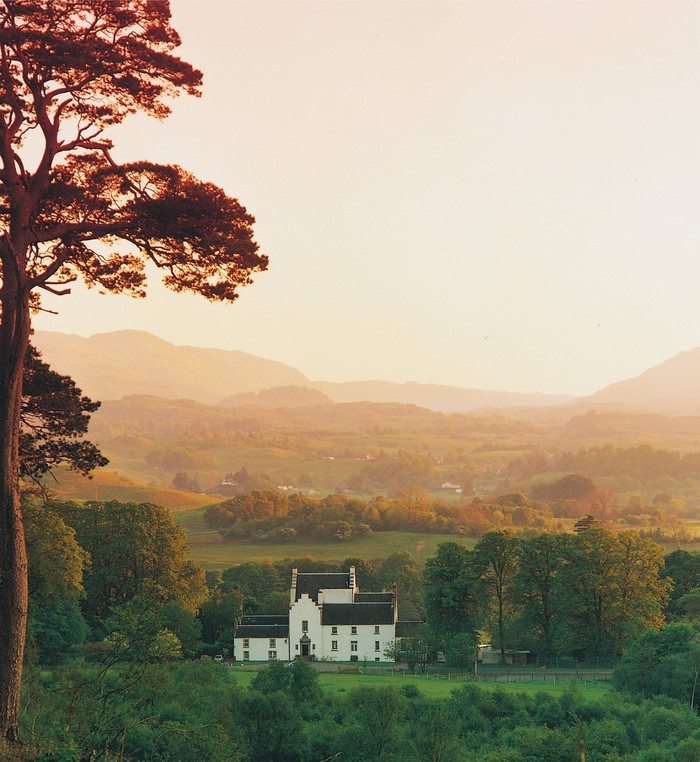contents
I would like to thank Maxine Clark for all her help with the recipes and inspired styling for the food photography. Without her support and encouragement this book would not have happened. Also a big thank you to Stephen Kearney for his food photography and to Alan Donaldson, Larry Cuffe, Andy Lock and John Gore for their photography. Last but not least thanks to Robert for being the most patient taster and introducing me to the wild north.
The Inverawe Smoked Fish Cookbook is an exciting collection of all my favourite recipes that I have created over the years. The great adventure started all those years ago when I married Robert and found myself heading north to Argyll to be the wife of a fish farmer! It was quite a culture shock compared to my sheltered life in Windsor, but I instantly loved the wild remoteness of the West Coast.

It is said that certain defining events change ones life and that certainly happened to us! At the end of 1977 there was a terrible gale and we could only stand and watch as the waves destroyed our fish farm. It was a heart-breaking time, but at that moment Robert made up his mind to have his business on land, and what better way than to start a Smokehouse! From then on it was sheer determination and hard work to rebuild the fish farm and create the smokery. I still remember the excitement when Robert appeared in the kitchen with the first side of smoked Loch Etive Trout it was fantastic, I would never have to make another starter! Little did I know that this was the beginning of my business life. Up until then, I had been bringing up our four lovely children, running the house and helping on the fish farm grading or gutting the occasional ton of fish. With Robert proving to be a complete natural at smoking fish, I found myself running the mail-order business. It was fun right from the start and I loved creating new and exciting recipes and serving suggestions for the catalogues.
The recipes are simple and honest. Many have been created by accident, many have just evolved over the years. I always say that if you start with the best of ingredients and treat them with respect, you cant fail. My only tip for using this book, which I was told a long time ago, is read through the recipe twice before you start its amazing what you miss the first time! I hope you will find my collection of recipes truly inspiring and that you will be brave and try something new!
Happy cooking and enjoy!
Its more than likely that smoking food was discovered by accident. Perhaps the weather was so awful that the fish was hung inside to dry, and it was noticed that those nearest the fire not only had a distinctive smoky taste, but lasted longer. Whatever the origins, it seems that by the mid sixteenth century there was a thriving pickling and smoking industry in Scotland. Barrels of salted herring were exported all over the world. Once faster transport gave access to the South and bigger populations, more palatable, less salty but smokier fish were produced, most notably kippers, Arbroath smokies and smoked salmon.
Smoking is a truly artisan way of preserving foods. It is the natural eco-friendly way, using sustainable raw materials. The most important ingredient in the smoking process is time. Time for the fish to take up the salt, time for the fish to slightly dry out before going into the smoke, time for the fish to gently take up the smoke and time for the fish to rest before being sliced. In todays increasingly time-poor world, these processes tend to be hurried but only to the detriment of the product.
The industry is divided between artisan smokehouses where an old craft is still plied and factory smokehouses that supply the mass market. They are two completely different establishments, two completely different products. The latter has enormous stainless steel kilns with dials for temperature, dials for humidity and dials for smoke; the former, just the artisan smoker himself, the fire and the weather. Both are good products, both serve market requirements and both are needed.
B eing traditionalists, we still use brick kilns and oak log fires. We try to emulate the process of the original smoking kilns as closely as we can. We are totally dependent on the weather. The perfect smoking weather is a good south-westerly wind the worst a cold, damp, still day which is very rare in this part of the world. Each kiln has its own Inverawe fire box. This is our own design - an oak-log fire on wheels. It is very simple, controlled manually by an adjustable flap at the base, and once going with a good heart, will gently smoulder for hours. At peak times the fires are kept going 24/7, being stoked by hand every five hours.
To be smoked properly, all fish must be cured or salted. This is primarily for taste as the salt helps to bring out the flavours of the fish, as well as having some preservative qualities. We use two curing methods dry and wet. In the dry cure method, the fillets are covered with a layer of salt, which in turn draws out the excess water in the fish, thus firming up the flesh and concentrating the oils. This is essential for the cold-smoking method, as the end result is dependent on the fish fillets drying out and taking up the preservative properties of the smoke. The wet cure method is the complete opposite. The fish is put in a saturated salt solution (brine) for a much shorter time. This method enhances the taste of the fish, retaining the water, which will keep the fish moist when hot-smoked.
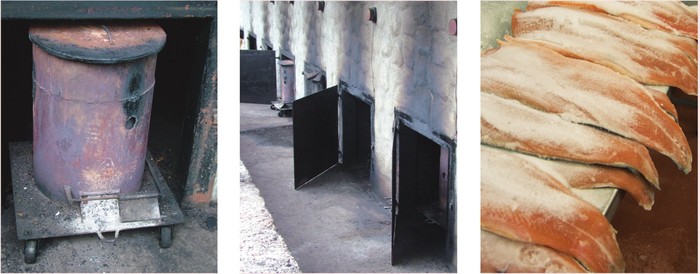
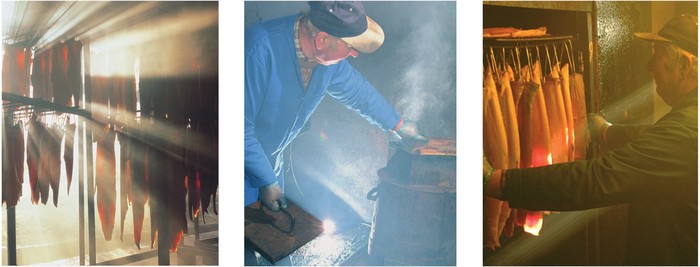
Curing times vary with different fish. For example, a grilse (young salmon), with its lean compact flesh needs much less curing-time than a large salmon in its prime. In general, we salt our salmon sides for about eight hours.
Washing off is as important as curing, as any excess salt left on the fish will lead to over-curing and saltiness. The fish is thoroughly washed and then hung or racked up, allowing it to drip off naturally, before going into the smoke.
In the smoke, the fish is left to take up the natural preservatives and flavours of the oak-smoke in its own unhurried time, under the keen and expert eye of the fire stoker. He must ensure that a constant temperature is maintained and a continual drift of warm, sweet smelling smoke envelops the fish. If the weather is too cold, the stoker must push the fire further down the smoking tunnel, too hot and he pulls the fire out slightly.

